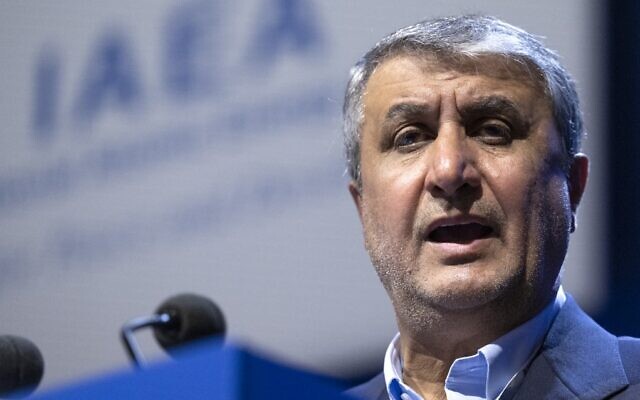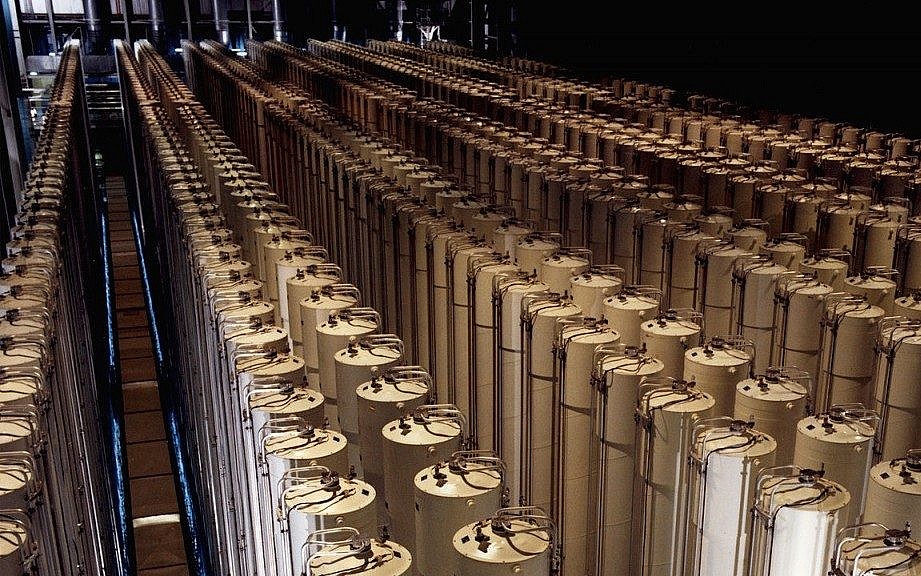La máxima autoridad de la organización de Energía Atómica de Irán, Mohamad Eslami, expresó que su país ha alcanzado niveles récord en la capacidad de producción de Uranio enriquecido. Por su parte, expertos en “No proliferación” han manifestado su preocupación, en relación con un informe de la IAEA (Agencia Internacional de Energía Atómica), que menciona la disponibilidad de Uranio enriquecido al 60% en Irán. Un adecuado reprocesamiento de ese material sensible, le permitiría alcanzar niveles del 90% de enriquecimiento, mínimo necesario para disponer de la capacidad de montaje de un arma nuclear.
TEHRAN — Iran said Saturday that its uranium enrichment capacity has increased to record levels, a day before UN nuclear monitors are set to visit the country.
“Currently, the enrichment capacity of the country has reached more than twice the entire history of this industry,” Mohammad Eslami, head of the Atomic Energy Organization of Iran, was quoted as saying by state news agency IRNA.
“Nuclear energy and atomic power production have great economic savings for the country and are effective in reducing fossil and non-renewable fuel consumption and environmental problems,” he added.
The International Atomic Energy Agency said last month that according to its assessment, as of October 22, Iran has an estimated 62.3 kilograms (137.3 pounds) of uranium enriched to up to 60% fissile purity. That amounts to an increase of 6.7 kilograms since the IAEA’s last report in September.
That enrichment to 60% purity is one short, technical step away from weapons-grade levels of 90%. Nonproliferation experts have warned in recent months that Iran now has enough 60%-enriched uranium to reprocess into fuel for at least one nuclear bomb.
The IAEA report, which was seen by The Associated Press, also estimated that as of October 22, Iran’s stockpile of all enriched uranium was at 3673.7 kilograms — a decrease of 267.2 kilograms since the last quarterly report in September.
The Vienna-based IAEA said it was unable to verify the exact size of Iran’s stockpile of enriched uranium due to limitations that Tehran imposed on UN inspectors last year and the removal of the agency’s monitoring and surveillance equipment in June at sites in Iran.
The IAEA said Wednesday that a technical team will visit Iran on Sunday to try to resolve a deadlock over the detection of traces of radioactive material at sites not declared as having hosted nuclear activities.
IAEA chief Rafael Grossi is not expected to be part of the delegation.
The UN nuclear watchdog has long called on Iran to explain the presence of man-made uranium found at three undeclared sites, requesting “access to locations and materials” as well as the collection of samples.

Eslami said on December 9 that the material detected at the three sites had been brought into Iran from abroad.
The issue has seriously hindered efforts to revive a 2015 nuclear deal between Iran and major powers, which has hung by a thread since the United States unilaterally withdrew in 2018 under then-president Donald Trump.
An IAEA delegation had initially planned to travel to Tehran last month, but the visit was postponed as the agency’s board of governors censured Iran for failing to provide “technically credible” answers.
Under the 2015 deal, Iran agreed to restrict its enrichment of uranium to just under four percent, well below the 90 percent level considered necessary for a nuclear warhead.
In return for that and other curbs on its nuclear activities, Iran was promised relief from international sanctions.
Fuente: https://www.timesofisrael.com


